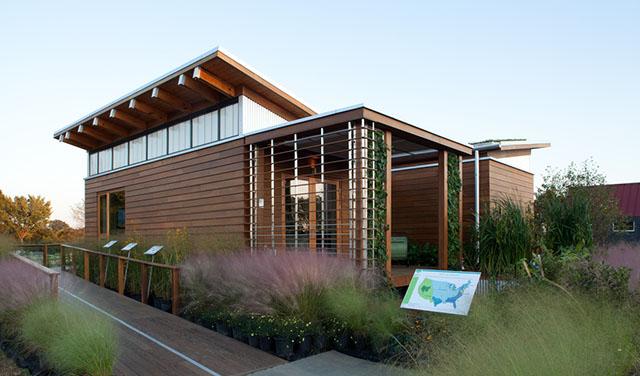The specialty in Sustainability in the Built Environment promotes research in the integration of environmental systems and the sustainable design of buildings and communities, investigating the interrelationship of building envelope design, buildings systems, energy utilization, building design for new construction and retrofit, and sustainable patterns of settlement. The School of Architecture, Planning and Preservation has recently been granted a new faculty hire that participates in an interdisciplinary sustainability cluster bringing together the School of Architecture, Planning and Preservation with the A. J. Clark School of Engineering and the College of Agriculture and Natural Resources. The students and faculty in this specialization come from the fields of architecture, engineering, environmental science and technology, urban planning, and real estate development.
Faculty:
Amy E Gardner
Clinical Professor, Architecture
Madlen Simon
Professor - Associate Dean Academic Affairs & Outreach
Garth Rockcastle
Professor, Architecture
Informal Housing Units, the Built Environment and Public Health
Malaria is one of the worst diseases in the world. The human affliction and economic expenses to prevent and treat it are huge. According to The World Malaria Report 2012 published by the World Health Organization, there were 219 million cases of malaria and 660,000 deaths in 2010. In 2011, almost half of the population of the world was at risk of contracting the disease and 90% of deaths occurred in the African Region, where children and pregnant women are the most affected. Strategies to control the disease are twofold: prevention and case management, and the built environment plays a major role in the first one - specifically in areas prone to massive mosquito reproduction. Architecture Professor Luis Quirós' article explores the spatial and holistic solutions proposed by a multidisciplinary design team for 24 informal housing units in the community of Minkoameyos in Yaounde, Cameroon. The design proposal makes use of passive, low-tech and waste-based technologies found around the world as it assembles an inventory of options that could be implemented with little investment by the community itself.
Tropical Studio - No Artificial Ingredients
Today, the practice of architecture is a very complex process. From sustainable, to contextual, to theoretical concerns, the role of the architect involves a wide variety of situations. Design is no longer a specific endeavor, but a holistic approach to critical thinking and problem solving. Style is no longer the theme - energy performance, digital realities and a globalized information society have become intrinsic agendas in architectural practice. In this sense, the architect is no longer the artist that intuitively proposed a building design, but the collaborative-practice director of flows of knowledge, social needs, new technologies and inventions. Architects then need to learn not the what, but the how - it is no longer just about the formal output of design, but it is about learning how to assemble and perform a critical design and thinking process.
Deepwater, MN - Planning and Designing a Regenerative Community
We are beginning work on the design of a new “Net Positive” Community in northern Minnesota to be called Deepwater. A private property owner has the uncommon opportunity of holding the mineral rights on an expansive acreage of reclaimed open pit mines and some surrounding woodland, in the Iron Range of Northern Minnesota. He and a management team have commissioned us to envision (Master Plan) a sustainable community, for commercial, institutional and residential uses. This effort involves collaborating with four jurisdictional levels of the public realm (city, county, state and federal).
Garth Rockcastle, graduate students, and other faculty, along with staff at MSR Design (http://msrdesign.com/) are advancing innovative research on the history, culture and environmental conditions of the area, as well as advancing creative design and planning concepts rooted in the most effective paradigms to create regenerative communities. Primarily utilizing principles advanced by the International Living Future Institute’s Living Community Challenge (http://living-future.org/lcc), the master plan phase will be completed in June 2015. The first tangible implemented projects will include a 2 MW solar array and an organic waste recycling facility scheduled for implementation in 2015.
SOHY, SOuth HYattsville, MD - Activating Public Spaces
We have been asked by private property owners and civic leaders to expand on the smart growth experiment of the Arts District in North Hyattsville. The new urbanism in North Hyattsville has enjoyed great financially leveraged successes. Meanwhile, South Hyattsville continues to struggle with lifting its traditional urban fabric. This proposal grows out of a request for advice and guidance for regeneration of the overlooked Southern portion of Hyattsville. We hope to extend the successes of NOHY down to SOHY, taking empty parking lots and forgotten alleys and converting these to active urbanism, urbanism which remains rooted to the history of the community and honors its artists.

